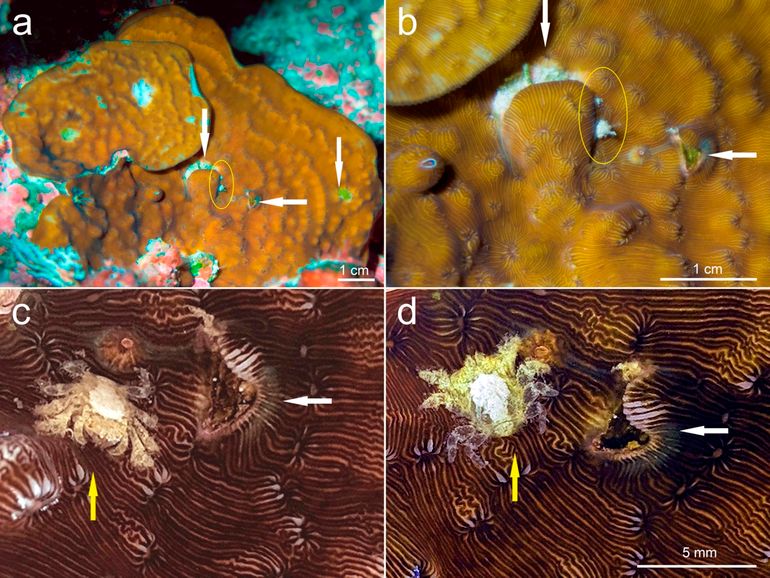
New host of Caribbean gall crab found hidden in plain sight on Bonaire’s coral reefs
Naturalis Biodiversity CenterPeople from all over the world come to Bonaire, as it is seen as an underwater paradise for divers, underwater photographers and to do snorkeling. Although the coral reefs are being intensively monitored to keep them safe from anthropogenic stressors, there is still much to be discovered if you know what to look for. A scientific expedition to Bonaire was organised by the WWF and the Naturalis Biodiversity Center (Leiden, NL), with the help of an international team of scientists. A majority of the participating scientists focussed on associated fauna living on or in coral colonies: burrowing worms, symbiotic anemones and sponges and small crustaceans which are all dependent on their coral hosts.
One of these associated crustaceans is the five millimeters small gall crab Opecarcinus hypostegus, a common Caribbean species, living parasitically on hard corals. The name ‘gall crab’ comes from the deformed growth of the coral, growing around the crab and shaped into a small hole. The female gall crabs, often pregnant with a lot of relatively large eggs, cannot leave their burrows and are trapped inside their hosts. Gall crabs are found in all tropical oceans, but there is a lot of work to be done on their specifics: for example, the host-specificity – which gall crab is living in which coral?
During the expedition to Bonaire, J. E. García-Hernández (University of Puerto Rico-Mayagüez) found a gall crab burrow in a previously unknown coral host: Agaricia undata. He made pictures of the crabs and their holes, and brought the crabs ashore for DNA-analysis. The DNA-barcoding analysis resulted in the identification of the crabs: indeed, the crabs were found to be the Caribbean Opecarcinus hypostegus. This meant that this specific crab-coral association was new to science. With the help of a part of the team (Naturalis Biodiversity Center and the ANEMOON foundation), the list of known hosts of this gall crab species could be extended to include the new association. We now know more on how ‘picky’ the gall crabs are in choosing a coral host in the Caribbean reefs. New discoveries on coral-associated fauna, like this one, lead to a better insight on the diversity, evolution, and ecology of coral reef creatures, particularly in the Caribbean, where gall-crabs have rarely been studied.

More information
- See for more information the article 'The scleractinian Agaricia undata as a new host for the coral-gall crab Opecarcinus hypostegus at Bonaire, southern Caribbean', written by J.E. García-Hernández, W. de Gier, G.W.N.M. van Moorsel en B.W.Hoeksema.
Text: Werner de Gier, Naturalis Biodiversity Center
Photos: Jaaziel E. García-Hernández; Werner de Gier
